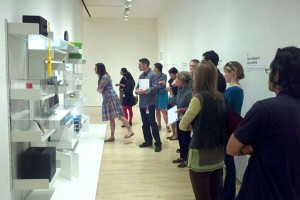
We began this series by looking at Abraham Maslow’s Hierarchy of Needs, noting how Maslow has creativity positioned at the uppermost level, at the level of Self-Actualization. We also noted that while the first four levels were characterized by a sense of “deficiency” or lack, this uppermost level of Self-Actualization was marked by a sense of wholeness, what Maslow called simply “being.” Next we brought in the work of Swiss psychologist, Carl Jung, bringing his description of the finite ego and the absolute Self into the mix. To review, since the finite ego perceives itself as separate from the world, it always feels a sense of lack or deficiency. By contrast, the absolute Self, which is the spark of divinity in each and every one of us, experiences the luminous interdependence that makes everything possible. Then we looked at challenges and opportunities to creativity and creative expression such as traumas and the unwillingness to go past primary selfish motivations. We also examined how these challenges and opportunities to creativity operated at both the level of the individual and also at the level of society. Now let’s bring it all together.
Even though creativity and creative expression is initiated by the individual and carried out by one individual or groups of people working together under a shared vision, what really makes creativity possible is a sense of something much larger than ourselves. Creative insight, for example, does not come from a preconceived notion already floating about in our mind but from our ability to open ourselves up to a broader collective, feeling into the dynamic, interdependent, deeply mysterious world in which we live. Universally, the experience of insight is the sense of something—an idea, a feeling, a hunch, an intuition—coming to us. In this light, our inability or unwillingness to get out of the confines of our own self-importance or self-centeredness, or our inability to acknowledge and heal unaddressed traumas, keeps us stuck somewhere in Abraham Maslow’s four lower levels, stuck with an underlying sense of deficiency. True creativity, however, is made possible by choosing to sit in the peace and fullness of being. Creativity, true creativity, represents our courage to open ourselves up to the world and interact with it directly. True creativity is always accompanied by a felt sense of conversation and exchange with the world at large.
In short, while our ability to create relies on our ability to fulfill our basic physiological and psychological needs, it also requires leap of sorts beyond self-cherishing, which is primarily ego-driven, into Self-actualization, which represents our more universal and far-reaching connections with the world in which we live. In this light, Abraham Maslow’s Hierarchy of Needs provides a useful tool in helping us understand how to actuate our own creative potential.